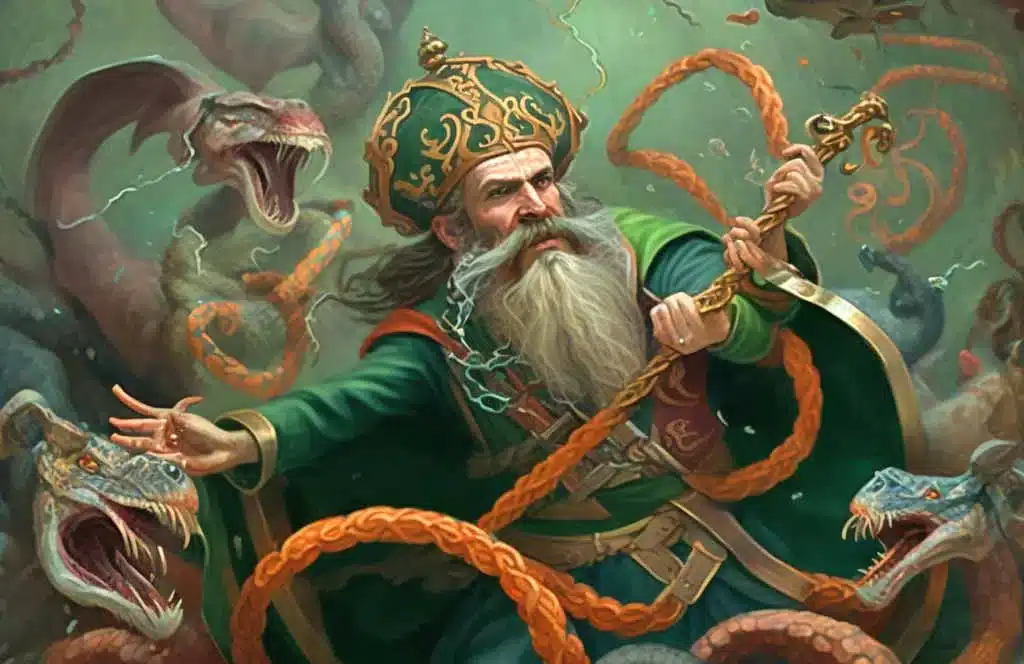Why there are no snakes in Ireland? Myth and Reality

Emerald Isle, is not only famous for its lush landscapes and vibrant culture but also for the curious absence of wild snakes in Ireland. As St. Patrick’s Day approaches, the legend of the patron saint banishing snakes from Ireland resurfaces. However, the truth behind this myth lies in a fascinating blend of Irish folklore and scientific realities.
(Also read 4.9% Surge in House Prices outside Dublin in 2024.)
The Legend about ‘Why are there no Snakes in Ireland?’
According to Irish legend, St. Patrick, the patron saint of Ireland, played a pivotal role in ridding the island of its snake population during the 5th century AD. The story goes that St. Patrick chased the snakes into the Irish Sea during a 40-day fast on top of a hill, thus banishing them from the land. This myth became ingrained in Irish culture, inspiring various artistic works and even the celebration of St. Patrick’s Day on March 17th worldwide.

Despite its widespread acceptance, Nigel Monaghan, a naturalist and keeper of natural history at the National Museum of Ireland, clarifies that there is no historical evidence of snakes ever inhabiting Ireland. According to Monaghan, there has never been any evidence of snakes in Ireland, hence St. Patrick had nothing to drive out. The legend likely originated as a metaphor for St. Patrick’s role in banishing paganism from the island.

The Science: Ice Ages and Climate
While the legend provides an intriguing narrative, the scientific explanation for the absence of snakes in Ireland is rooted in geological history and climate conditions. When snakes first appeared, some 100 million years ago, Ireland was submerged under water, preventing the reptiles from making a home there.
As Ireland rose above the surface, it was connected to mainland Europe, allowing for the potential migration of snakes onto the land. However, the cold climate of Ireland became a formidable barrier for the cold-blooded creatures. Approximately three million years ago, the onset of the Ice Age made life unsustainable for snakes, causing them to disappear from the island.
Scientists estimate that Ireland experienced around 20 climate changes, often covered by ice. The last significant ice age occurred approximately 15,000 years ago. Since then, the climate has remained relatively stable, making it unsuitable for the survival of cold-blooded reptiles.
Moreover, Ireland’s separation from mainland Europe during the last ice age, creating the North Channel, a 12-mile water gap between Ireland and Scotland, further prevented snakes from reaching the island.
Paganism and Symbolism: A Modern Perspective
The legend of St. Patrick banishing snakes has become a symbolic representation of the Christian missionary’s role in eliminating paganism from Ireland. Many pagans today view the absence of snakes as a metaphor for the removal of their spiritual predecessors.
Because of this, some people decide to wear a snake emblem on St. Patrick’s Day to protest against festivities that commemorate the rejection of one religion in favour of another. This unique perspective adds a modern twist to the ancient legend, highlighting the ongoing cultural and spiritual diversity in Ireland.
In conclusion, while St. Patrick’s role in banishing snakes remains a cherished legend, the true absence of snakes in Ireland is owed to geological and climatic factors. As we celebrate St. Patrick’s Day this year, let’s appreciate the rich tapestry of Irish culture, where myth and science intertwine to create a fascinating narrative about the Emerald Isle.


